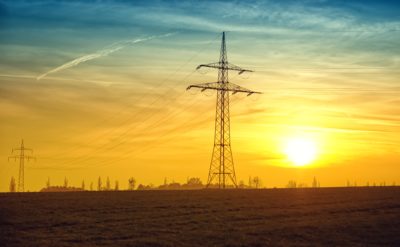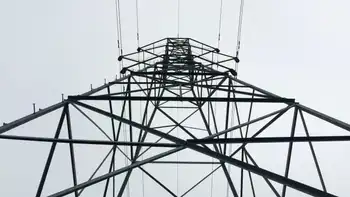Regulatory clarity for utilities elusive
By Industrial Info Resources
Protective Relay Training - Basic
Our customized live online or in‑person group training can be delivered to your staff at your location.

- Live Online
- 12 hours Instructor-led
- Group Training Available
"On the utility boiler MACT rule, it appears that the EPA has not really done its homework. We expect that the EPA will have to go back to the drawing board on that proposed rule," he said in an exclusive "Navigating the Currents of Change" interview.
Ramey said that the EPA's utility boiler MACT rule was "ambiguous at best, and it didn't provide the industry with the clarity it was seeking." This long-awaited draft rule, released in mid-March to meet a deadline set by a federal judge, would regulate power plant emissions of mercury, acid gases and particulates under the Clean Air Act. The draft rule would reduce power plant emissions of mercury by an estimated 91.
"The EPA knows it's in trouble on the utility boiler MACT rule," Ramey said. "It received over 48,000 comments on earlier versions of this rule. It went to the judge and asked for more time, but the judge said 'no, you will finalize this rule and it will be on the books by November 2011.' The EPA agency appears to be preparing for litigation."
"Some generators have already spent millions of dollars, if not hundreds of millions of dollars, to install pollution-control equipment," Ramey noted. "Others will have to move forward to install pollution equipment or upgrades — but they need more clarity. And some will look at the cost of complying with the boiler MACT rule as well as the Clean Air Transport Rule, and conclude they have no viable option but to shut down their older, less efficient units. But the devil will be in the details."
The EPA's draft transport rule, proposed last year and scheduled to be finalized by the end of this year, gives operators a clearer idea of what pollution-control equipment they will have to install. The rule seeks to lower emissions of sulfur dioxide SO2 and nitrogen oxides NOx in power plants located east of the Mississippi River. Ramey said that the rule provides electric generators with greater clarity: "A lot of operators have a clear view of what they'll have to do. Several companies are either upgrading their existing scrubbers or installing new scrubbers or selective catalytic reduction SCR equipment. One company is pulling a wet scrubber out of mothballs, cleaning it up, dusting it off, and getting it ready to run. And others have made the decision to close older, smaller, less efficient coal plants and replacing the lost generation capacity with natural gas generation."
These two EPA rules will lead to increased spending this year for in-plant capital expenditures and front-end engineering and design FEED work for power plants considering the installation of pollution-control equipment, Ramey predicted. But most projects are not expected to begin construction until 2012 at the earliest. Ramey noted that IIR clients can stay abreast of capital and maintenance spending decisions for North American electric generators by regularly consulting IIR's North American Electric Power Generation database, which is tracking over 3,000 separate projects valued at more than $866 billion. As companies make their decisions to install pollution control equipment or close plants, these decisions will be reflected in the database.
As the Power Industry was analyzing the financial and operational implications of these two rules to lower emissions, the EPA proposed a draft rule on power plant cooling-water intake structures under section 316b of the Clean Water Act. That draft rule, issued at the end of March, seeks to lower the number of fish and other marine life that are killed or injured by cooling water systems used by utilities and manufacturers to cool their equipment.
The draft CWA rule applies to an estimated 1,260 existing industrial facilities — power plants and manufacturers — and will cost those facilities about $384 million annually, the agency estimated.
"The fact that all three draft regulations — utility boiler MACT, Clean Air Transport Rule, and CWA section 316b — are in play at the same time makes it extremely complicated for utility generation groups to decide what they are going to do," Ramey said. "Over the next 10 years, but especially between now and 2014, the industry will be hit by one new rule after another. It will be a very interesting decade."
Ramey noted that utility regulatory compliance matters are further complicated by the ongoing budget battles in Washington, D.C., between Congress and the Obama administration. Separate measures are circulating in the House and Senate that would either delay or permanently prohibit the EPA from regulating carbon dioxide emissions from stationary sources like power plants under the Clean Air Act. In addition, the potential for a near-term government shutdown and House Republicans' proposal to dramatically reduce the size and scope of the federal government over the next decade have left many wondering about the future of EPA regulation — about greenhouse gas emissions, as well as more conventional power plant emissions of SO2, NOx, mercury and particulates.
"Congress is looking at making a lot of budget cuts," Ramey noted in his interview. "They're looking at the EPA and its programs to see what can be done to trim the size of that agency. If they are successful, the agency's ability to regulate effectively will be hampered. We're kind of in a 'wait and see' mode to until we know what gets the hatchet and what doesn't."











